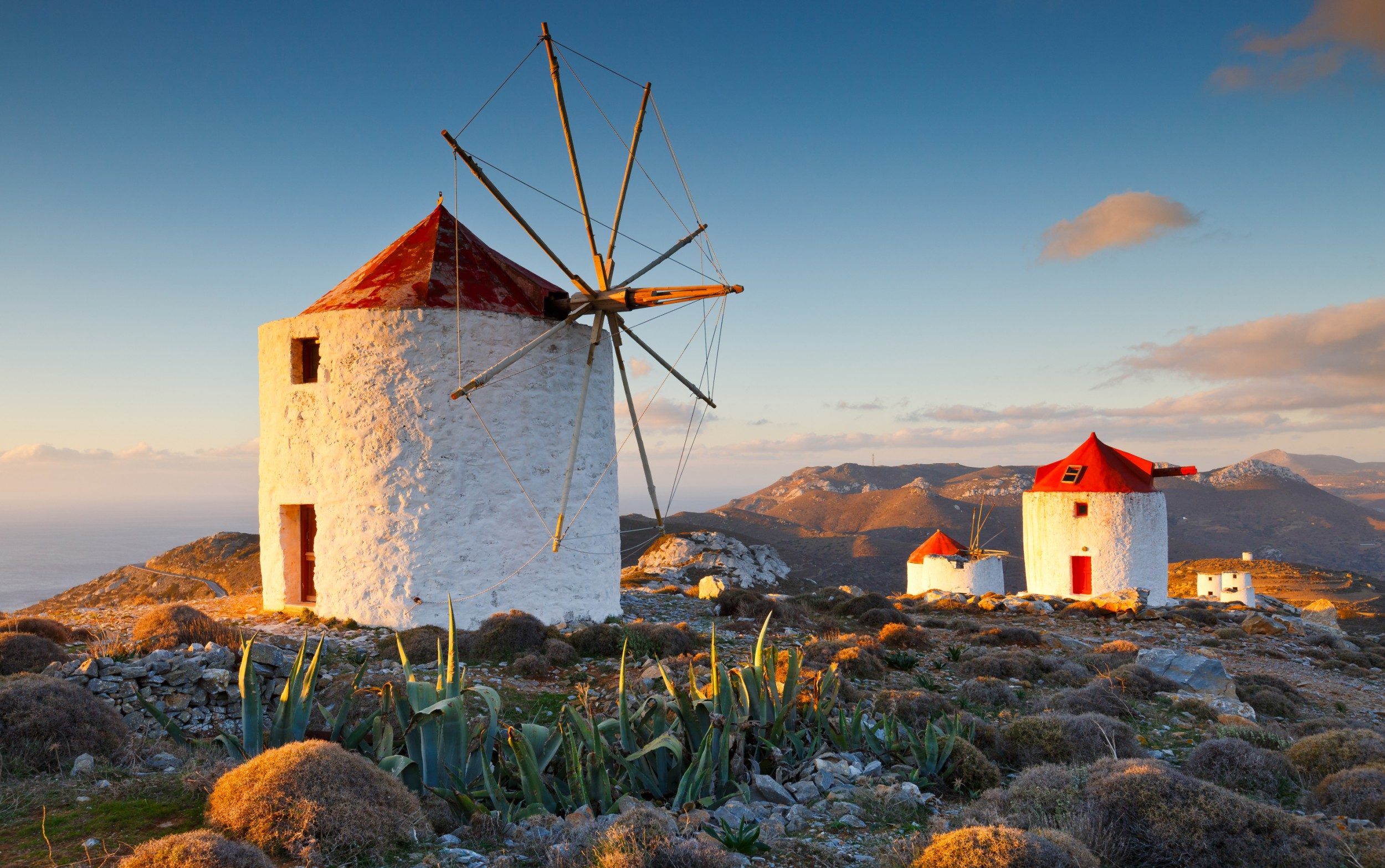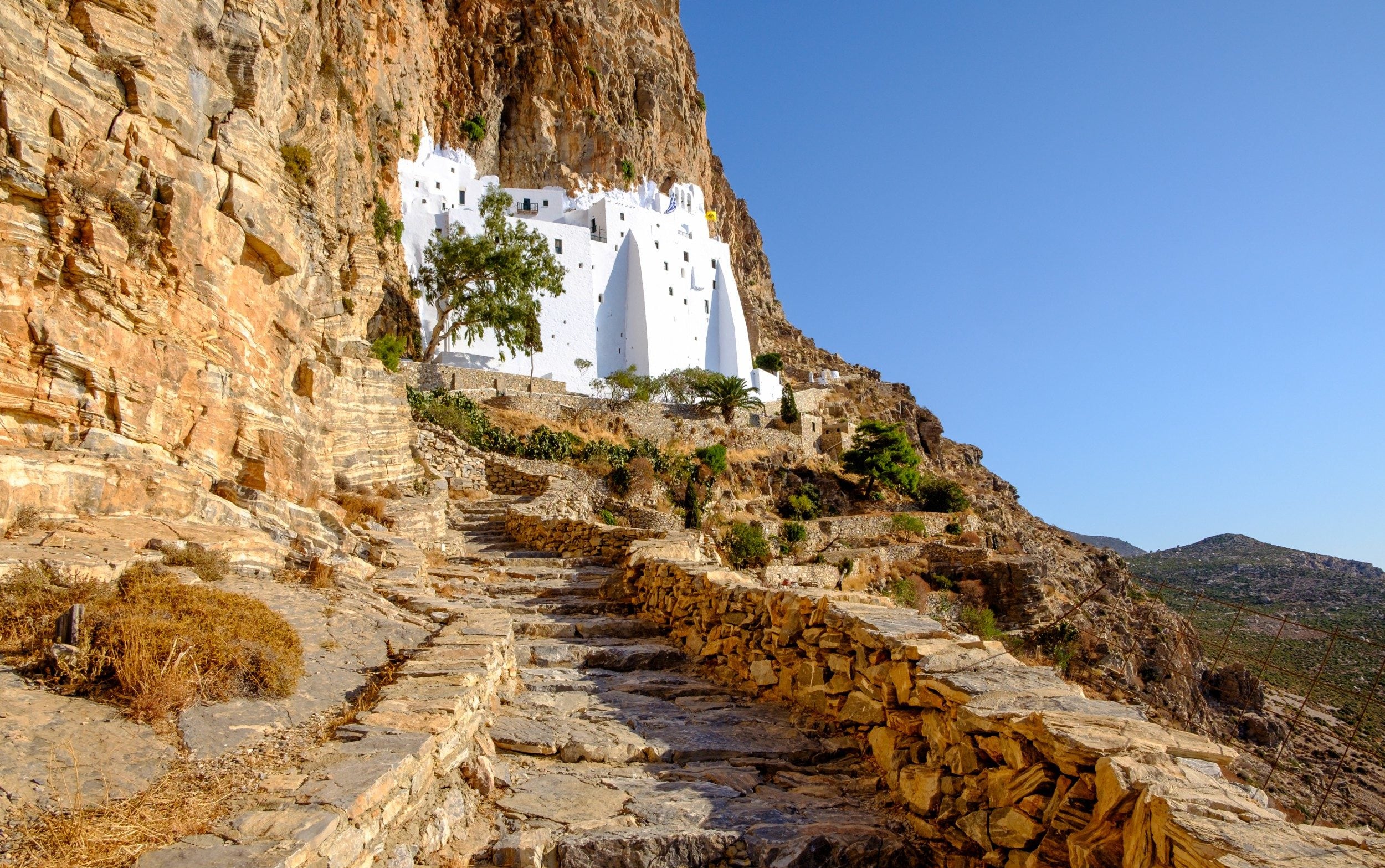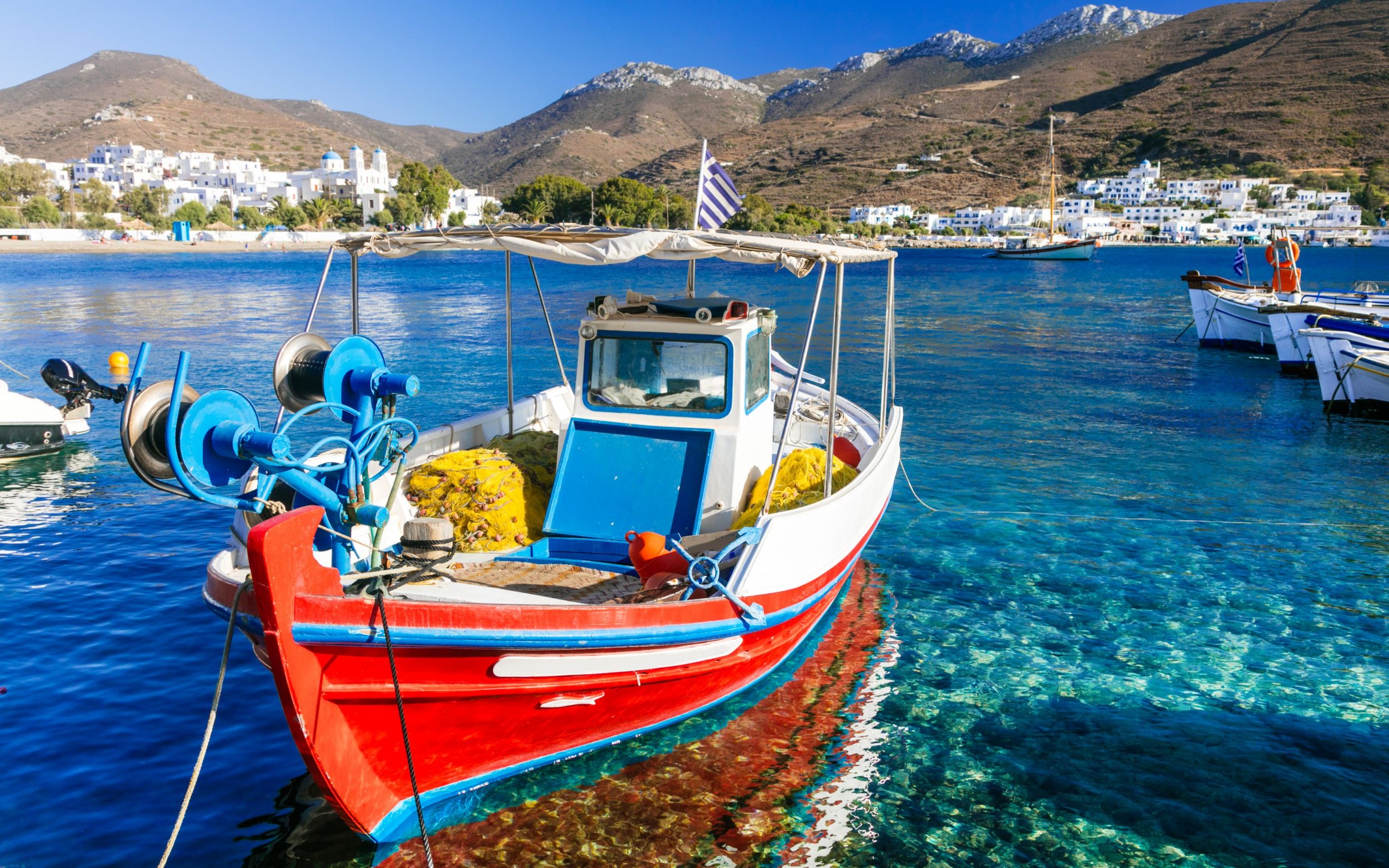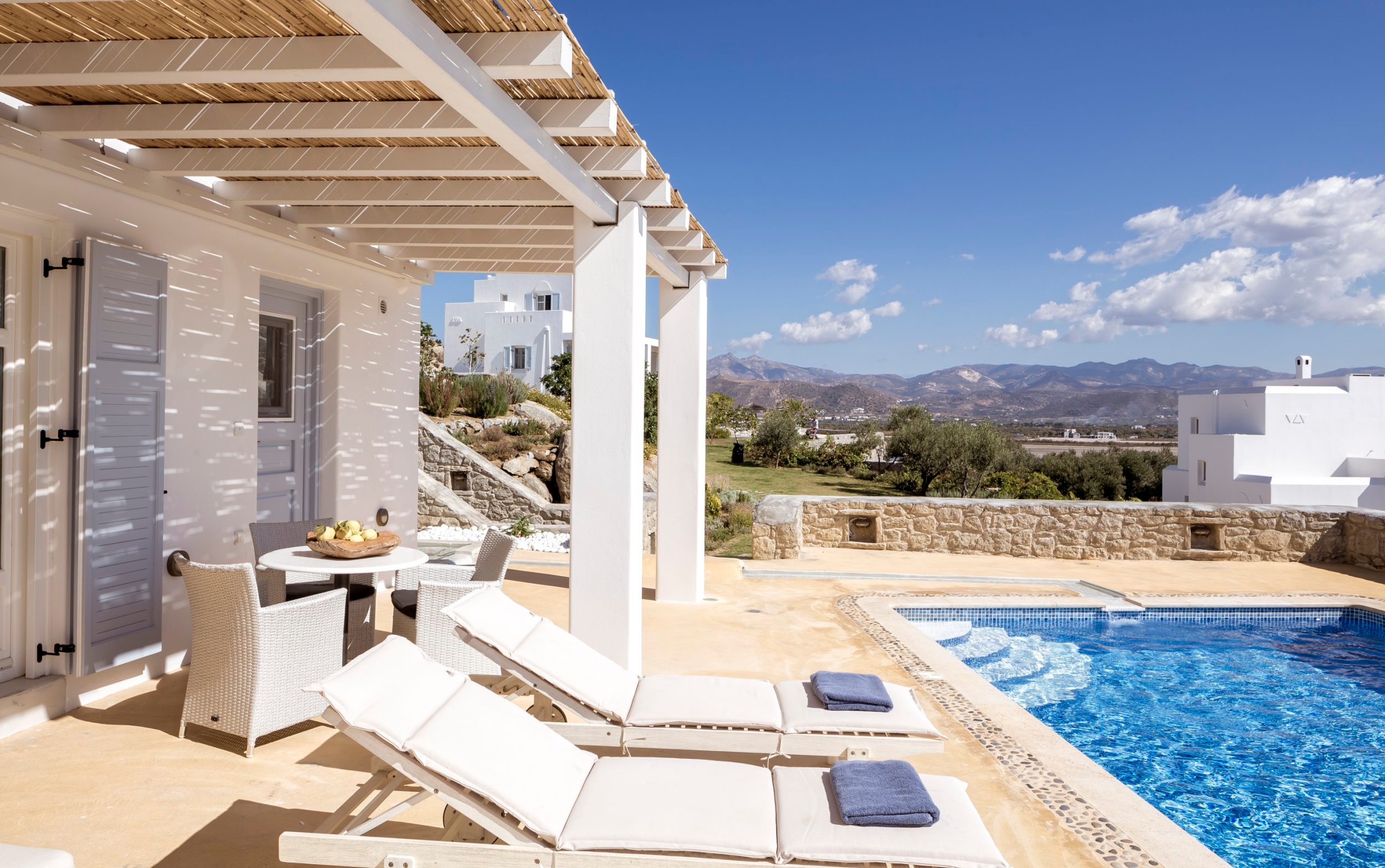
It’s possible you’ve never heard of Amorgos – unless you’re from France, where for 35 years this easternmost Cycladic island has occupied a spot of unique reverence in the cultural consciousness. For this, it can thank director Luc Besson’s 1988 opus, The Big Blue, an ethereal, sax-soaked ode to Amorgos’s other-worldly landscapes and clear waters, which has long drawn Gallic yachters, walkers and bon vivants – who’ve had the place almost entirely to themselves.
Tourists on Amorgos, particularly non-French ones, still provoke a vague mixture of bemusement and intrigue, and – other than the odd car-rental shack and independent boutique selling the kind of simple linen ensemble that looks so effortlessly chic on a French yachtswoman – you’d be forgiven for missing any hint of a tourism industry entirely.
I’ve been visiting the Greek islands for 30 years and have explored 25 of them, yet it was only relatively recently that this Aegean outlier finally registered on my radar. Fascinated, I pored over guides, swatted up on ferry schedules and even sat through (most of) The Big Blue – then I hotfooted it to Athens.
That’s right, Athens. Sure, it’s easier to fly to neighbouring Mykonos (easyJet and British Airways go direct from London) then take the two-hour ferry on to Amorgos – but you’d be missing all the fun.
Instead, take a bus from Athens to the port of Piraeus, find a hotel close to the dock and, early the next morning, leap aboard the first ferry heading south. You’ll sit on deck as the sun comes up, leaving the mainland behind as the air grows thick and humid, sipping gently sweating frappés as you forge through the glistening waves into the great beyond.

Amorgos sits right on the edge of the Cyclades – stretching diagonally eastwards towards the neighbouring Dodecanese – so it’s important that you subscribe to this particular genre of seabound bliss, as you’ll be getting eight salty, sun-soaked hours of it. You’ll dock in Katapola, one of Amorgos’s two tiny port towns, just the tiniest bit sunburnt, windswept and in time for a late lunch.
The latter should be enjoyed with studious gusto, as the epicurean delights of this particular island far outweigh those of its sisters (don’t tell Naxos), and should be treated with due approbation. Yes, there’s plenty of excellent seafood and generously stuffed spanakopita, but also local delicacies such as paximadi (dark-bread rusks), fava, xynomizithra (a soft, sour goat’s cheese) and patatato (a goat and potato stew) – and that’s before you even get to the fresh honey, olives and local tipple psimeni (a baked raki infused with sugar and spices).
In Katapola, the best food can be found around the bay at the Sunset Seaside Village – but it’s also well worth hiring a car and seeking out Ston Pyrgo, a family-run taverna just outside the village of Rachoula.
Thus fortified, the beach beckons. The obvious choice is Kalotaritissa Bay, not only because the drive takes you directly past the wreck of Olympia – the ship’s rusted remains that so bewitched French cinemagoers of the 1980s – but also because it rivals some of the Caribbean’s best stretches of white sand and clear water. That said, don’t ignore Maltezi, a pretty little cove with a tiny beach bar-shack just around the bay from Katapola, or Agios Pavlos, jutting out from the road north towards Aegiali.
Agia Anna is much talked about, too, but if you’re headed to that side of the island, far better to spend the day hiking up to Amorgos’s most photographed landmark – the starkly white Panagia Hozoviotissa monastery, which clings to the island’s sheer eastern cliffs – and join the bearded monks in a glass of psimeni. There are sleepy villages to be visited too, chief among them Chora (look out for the windmills), Tholaria and Langada, each snaked with bougainvillea, rambling whitewashed alleyways and ubiquitous cats.

; pause to pass the time of day; ask how many grandchildren the owner has – than empty your wallet. And it is this which makes Amorgos that very rare thing: the most perfect of Greek islands.
How to do it
). Bus X96 runs every 30-40 minutes from Athens International Airport to Piraeus; tickets cost €6.
).
).

Hopping on
With its two ports and many ferry links, Amorgos also makes a great jumping-off point for a spot of island-hopping, so why not add a few of these neighbouring isles to your itinerary?
Ano Koufonisi
Long favoured by sophisticated Greeks and moneyed hippies, this tiny island is as quiet and calm as they come.
).
).
Santorini
Why wouldn’t you go to Santorini? It’s not a sleepy island, but sunsets over the caldera more than make up for bigger crowds and higher prices, particularly with a glass of locally grown wine.
).
).
Iraklia
What Iraklia’s population lacks in size (there are fewer than 200 permanent inhabitants) it more than makes up for in warmth and hospitality.
).
).

Naxos
).
).
).
Mykonos
Its reputation as an upmarket party island is misleading. There’s still plenty of old-world charm on Mykonos – particularly in the labyrinthine back alleys of Mykonos Town, its twists and turns designed to confuse marauding pirates.
).
).
This article was first published in June 2022 and has been revised and updated.


Post a Comment
0Comments